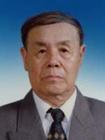

Shen Rongxian (1923- ) is a native of Liaoyang, Liaoning province. He graduated from Department of Veterinary Medicine, Shenyang Agriculture University in 1944. His research mainly focuses on immunology of viral diseases of domestic animal. Shen is an academician and research fellow of Chinese Academy of Engineering. He is also working as director of Harbin Institute of Veterinary Science, Chinese Academy of Agriculture. Before 1949, he successfully developed cattle and goat reaction vaccine against rinderpest lapinized virus. In 1951, he developed lapinized and caprinized rinderpest attenuated vaccine. In 1953, he cultivated ovinized and caprinized lapinized rinderpest attenuated vaccine to vaccinate Korean cattle and yaks which could easily contract rinderpest. His vaccine vaccinated more than 40,000 yaks and helped curb the then-prevailing rinderpest from 1953 to 1954. In 1956, the then prevailing rinderpest was eliminated nationwide, for which Shen won Third Class Science Award issued by Chinese Academy of Sciences. In 1958, he was the first one in the world who successfully made a cattle infected with lapinized swine fever virus. Vaccines for a number of 200,000 pigs can be produced from one cattle infected with lapinized virus, which helped tremendously in prevention and cure of swine fever. He had been directing the research on immunity of equine infectious anemia since 1967, and after 10 years' effort, he finally cultivated Donkey Leucocyte attenuated virus which can be made into lyophilized vaccine. French and American scholars proved, both equine infectious anemia and HIV virus belong to retroviruses, and that they shared very similar characteristic: both of them had cross immune reaction. Therefore, to reveal the secret in immunity of equine infectious anemia can provide a new path to development of immune vaccine against lentivirus of both human and domestic animal. Shen was awarded Einstein prize for his study on immunity of equine infectious anemia in 1989. He was also the winner of Technological Advancement Award, First Class awarded by Agriculture Ministry, and National Invention Award, First Class.
STUDY ON IMMUNITY OF EQUINE INFECTIOUS ANEMIA
Shen Rongxian and Xu Zhendong
(Harbin Institute of Veterinary Science, Chinese Academy of Agriculture)
Abstract
Development and Application of Equine Infectious Anemia Donkey Leucocyte Attenuated Virus Vaccine are discussed.
Equine Infectious Anemia (EIA), caused by a member of retroviridiae, is characterized by high fever, anemia and petechia in various organs, etc. A large number of horses died during an acute outbreak, while the animal tolerating the disease will become chronic or symptomless. The infection source is the horses with virus persistence. The disease costs a huge economic loss in the horse raising countries.
As EIA is caused by a lentivirus, within which antigenic shift occurs, many scholars in the world had tried to develop effective vaccines, but failed. In our laboratory, an attenuated vaccine with good immunogenicity was obtained by changing the viral growth conditions through the passages and adaptation of a virulent EIA virus strain in donkey leucocyte for ten years. In prolonged observation (from 6 to 39 months), the vaccinated horses did not reveal any side effects. Reversion tests in horses showed that there was no occurrence of reversion. The horses inoculated with the attenuated virus could not induce infection in the healthy horses through cohabitant test-Foals born from vaccinated mares were tested biologically and proved to be free of the virus.
Obvious humoral and cellular immune responses were detected in the vaccinated horses. In the challenge tests with virulent EIA virus, the vaccination could offer over 85% protection for horses. The vaccine could not only protect the challenge of the Chinese homologous EIA strain, but also the American heterogeneous Wyoming virus strain. The immunity persisted for over three years.
Since 1975, the vaccine has been applied in the field and more than one million of Equidae were vaccinated in China. The morbidities were markedly decreased with vaccine application, at present, there was hardly any disease occurring and EIA has been effectively controlled and prevented in China.
In 1983, an international symposium on immunity to EIA was held in Harbin, and the vaccine was well received and affirmed by the experts from America, France and Japan. And then many countries, especially Latin American Countries which were affected by EIA, wished to introduce the vaccine for the prevention of this disease. In 1987 and 1989, the safety tests and field trial were carried out in Cuba and Argentina.
The success of EIA attenuated vaccine made not only a huge economic benefit in the control of EIA, but also a break-through in the immunological theory of lentivirus. Soon after the discovery of AIDS virus, the scholars in the United States and France proved that both AIDS and EIA viruses belong to Lentivirus. The EIA virus is very similar to AIDS virus in the following aspects: mode of transmission; monocytes as virus reservoir; morphological and genetic structure; pathogenesis with T cells as target and persistent infection; cross serological reaction between p26 of EIAV and p24 of AIDS virus.
Therefore, disclosing the immunological secrets of EIA, and especially setting EIA as an animal model will open a new way to the immunological study and vaccine development for lentivirus diseases of men and animals.